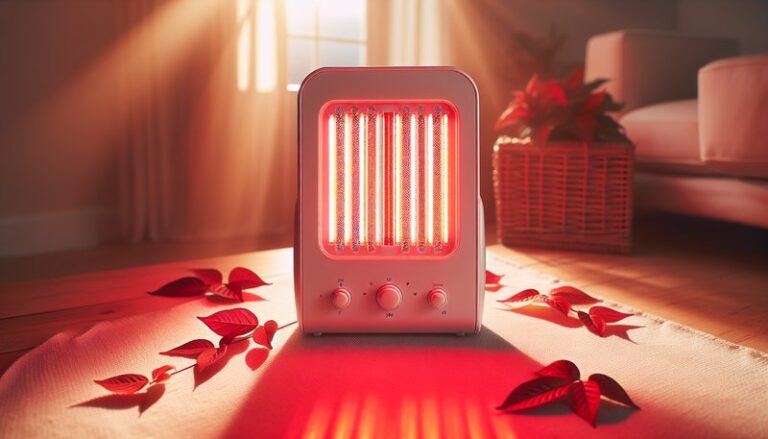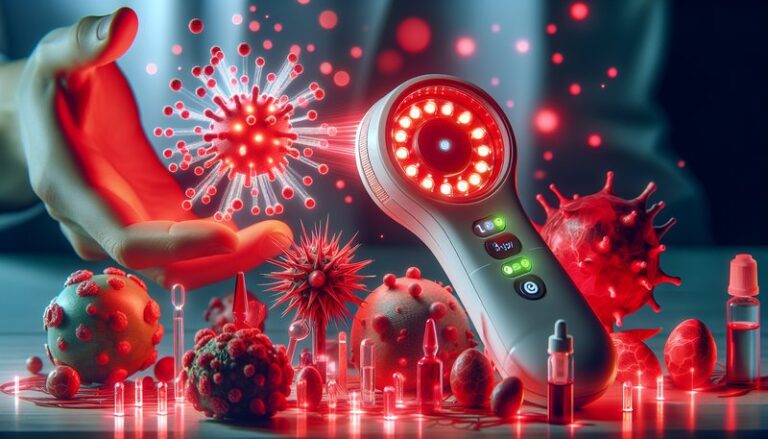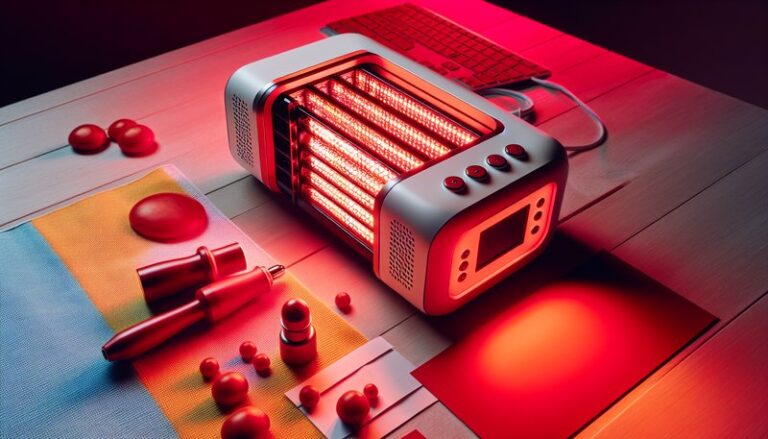Can Red Light Therapy Help Rosacea?
Have you ever struggled with the redness and irritation caused by rosacea? If so, you may be wondering about the potential benefits of different therapies, including red light therapy.
This article will explore whether red light therapy can effectively manage rosacea symptoms. It will cover the key benefits, considerations, alternatives, and address some common questions related to the treatment.
Key Takeaways
- Red light therapy may help reduce inflammation and redness associated with rosacea.
- It offers a non-invasive treatment option compared to traditional medications.
- Patients should consult with a healthcare provider before starting red light therapy.
What is Red Light Therapy?
Red light therapy (RLT) involves the use of low-level wavelengths of red light to stimulate healing processes in the skin. This therapeutic technique relies on specific wavelengths (typically between 600 and 650 nanometers) to penetrate the skin and promote various biological responses.
Red light therapy has gained attention in recent years for its ability to improve skin conditions, including acne, scars, and rosacea. Specifically, it can enhance cellular function, boost collagen production, and improve circulation in the treated areas, making it a valuable option for those dealing with the symptoms of rosacea.
The treatment is typically painless and can be administered in various settings, including at-home devices and professional clinics.
What are the Benefits of Red Light Therapy?
Exploring the benefits of red light therapy provides insight into how it may help those with rosacea manage their symptoms effectively.
Reduction of Inflammation
Red light therapy has been shown to reduce inflammation in several studies, making it beneficial for rosacea patients. By decreasing inflammatory markers in the skin, RLT may help diminish redness and irritation associated with rosacea flare-ups.
Improved Skin Texture and Appearance
With regular treatment, many users report improvements in skin texture and an overall boost in appearance. Enhanced collagen production can lead to firmer skin, which may help smooth out the unevenness often caused by the condition.
Non-Invasive Approach
Unlike some traditional treatments for rosacea, such as oral medications or laser treatments, red light therapy is non-invasive. This means there is no downtime, making it a convenient option for individuals managing the condition in their daily lives.
Pain Relief
Red light therapy may also provide pain relief for those experiencing discomfort due to rosacea flare-ups. By promoting circulation and reducing inflammation, it can ease the sensations of heat and irritation commonly associated with the condition.
Is it Possible to Use Red Light Therapy for Rosacea?
Yes, red light therapy can be used as an effective method to manage rosacea symptoms. However, it’s crucial for patients to assess the feasibility and ensure they understand what to expect from this treatment.
What are the Advantages of Using Red Light Therapy?
The advantages of using red light therapy for rosacea include:
Convenience of Use
Many red light therapy devices are available for home use, making it easy for patients to integrate this treatment into their routines without the need for frequent clinic visits.
Minimal Side Effects
Most patients experience few side effects from red light therapy, which may include mild warmth or redness immediately after treatment. These effects are generally temporary and resolve quickly.
Compatible with Other Treatments
Red light therapy can often be used alongside other rosacea treatments, allowing for a holistic approach to symptom management.
Data Supporting Efficacy
Research indicates that red light therapy may effectively reduce rosacea symptoms, leading to widespread acceptance in dermatological practices.
Learn all about it in Red Light Therapy for Weight Loss
What are the Disadvantages of Using Red Light Therapy?
Despite its benefits, there are some disadvantages to consider.
Variable Results
Not everyone responds to red light therapy, and the results can vary widely. Some individuals may notice an improvement, while others do not experience significant changes.
Cost of Medical Devices
While at-home devices are available, they can be expensive. Patients should weigh the cost against potential benefits and consider other treatment options available.
Time Commitment
Achieving optimal results with red light therapy may take time and require multiple sessions, which can be a commitment for busy individuals.
What are the Things to Consider Before Using Red Light Therapy?
Before starting red light therapy for rosacea, consider the following important factors:
Consulting a Professional
Before beginning any new treatment, it’s crucial to consult with a dermatologist or healthcare provider to determine if red light therapy is an appropriate option for your specific case of rosacea.
Understanding Skin Sensitivity
Individuals with rosacea often have sensitive skin. It’s essential to gauge how your skin reacts to initial treatments and adjust accordingly.
Maintenance Protocol
Regular sessions may be necessary to maintain results, so consider how often you can commit to therapy sessions and factor this into your treatment plan.
For the full details, see Red Light Therapy for Face
What are the Alternatives to Red Light Therapy?
In addition to red light therapy, several treatment alternatives can help manage rosacea symptoms effectively.
Topical Treatments
Prescription creams, such as azelaic acid or metronidazole, are commonly recommended and can effectively reduce redness and inflammation associated with rosacea.
Oral Medications
For more severe cases, dermatologists may prescribe oral antibiotics like tetracyclines to help manage inflammation and redness.
Laser Treatments
Various laser treatments are effective in reducing redness and improving skin texture for individuals with rosacea. These often provide immediate results but may require downtime for recovery.
Conclusion: Is it Recommended to Use Red Light Therapy?
Red light therapy offers a promising option for managing the symptoms of rosacea, particularly for those seeking non-invasive treatments with minimal side effects. While many patients report benefits such as reduced inflammation and improved skin texture, individual results can vary. Consulting with a healthcare provider for personalized recommendations based on your specific situation is highly advisable.
Frequently Asked Questions
Can red light therapy be done at home?
Yes, there are various at-home red light therapy devices available that can be used safely and effectively. However, it’s essential to follow the manufacturer’s instructions.
How long does each red light therapy session last?
Typically, sessions last anywhere from 10 to 20 minutes, depending on the device and treatment area. It’s crucial to adhere to the specific device’s guidelines for optimal results.
Are there any side effects associated with red light therapy?
Side effects are generally minimal. Some individuals may experience mild redness or warmth after treatment, but these effects are usually temporary.
How often should I undergo red light therapy?
For best results, treatments are often recommended 2 to 3 times per week. However, your dermatologist can provide a tailored treatment plan based on your needs.
Is red light therapy suitable for all skin types?
Red light therapy is considered safe for most skin types, but it’s advisable to consult with a healthcare professional, especially for those with sensitive skin or underlying skin conditions.





